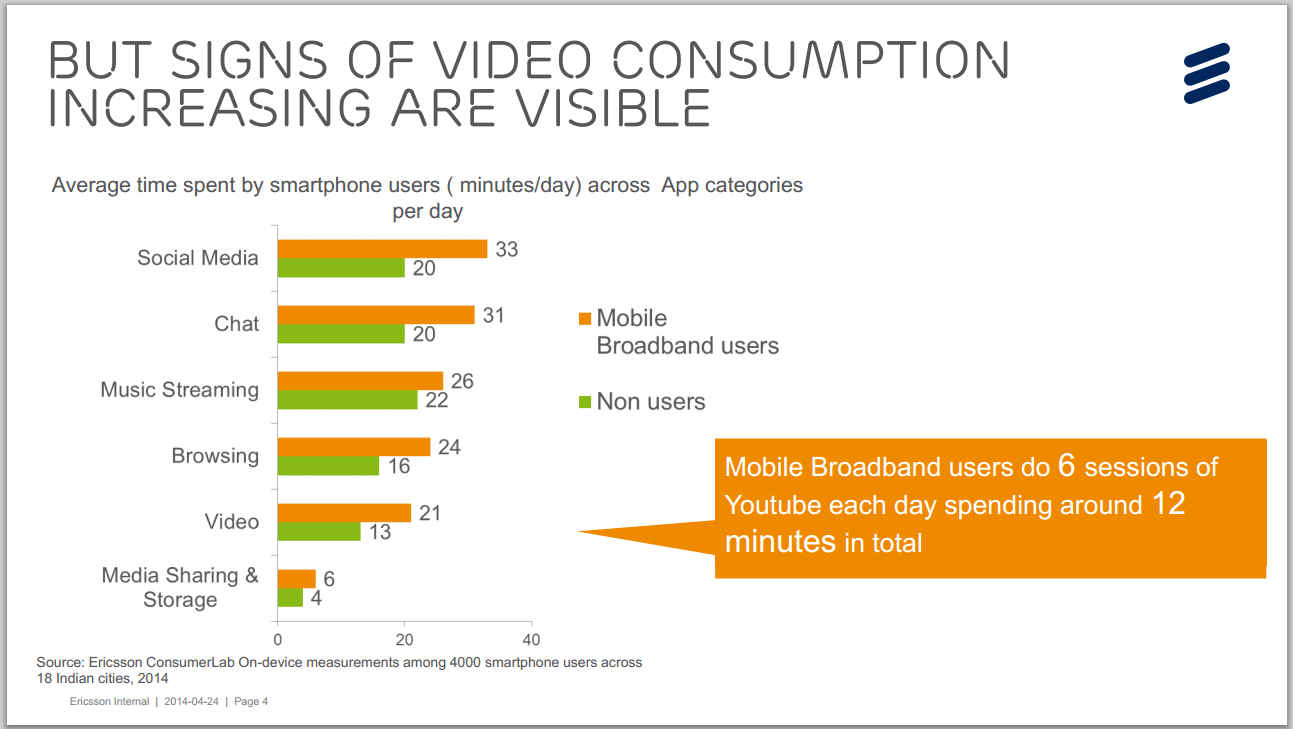Analysis: How can mobile VAS segment hit the revival path
The VAS industry has to move beyond traditional content such as astrology and wallpapers, and shift focus on data. What else should be done for VAS' revival? We take a detailed look:

Riding high on the massive growth of voice segment, telecom operators had forayed into the mobile Value Added Services (often referred as mobile VAS) segment for primarily additional revenues as well as giving customers more services other than the voice calling. The VAS segment kicked off pretty well with mostly focussed on content-based services such as caller tunes, news and cricket alerts etc. Though there are massive growth estimates for the segment, reality is VAS players are under severe pressure to adapt to the new dynamics of the industry and changed customer preferences, which is heavily data-centric.
 Survey
SurveyAs pointed out at the recently held VAS Asia 2014, smartphones have apparently 'disrupted' the VAS market and that the players need to evolve before they are wiped out. Internet-enabled smartphones have ensured that a user has more liberty in terms of finding content on the go. Yes, there's still a dependence on the operator, but hasn't that dependence shrunk to mere a pipeline for connectivity? VAS at its peak had ensured operators more control on the network as well as users.
So, how can the VAS segment survive? Answer is simple – Adaptation. Adapt to the changing market dynamics and customise services accordingly. Despite a large number of users still on feature phones, the VAS players need to focus on the data segment – shift from non-data VAS to data-based VAS.
“I believe that smartphones are in fact driving and pushing the data VAS segment. The entry level barrier in smartphone has shrunk, which is not just propelling its adoption but is also driving mobile Internet penetration. This is consequently increasing the consumption of data VAS in terms of various messenger & chat OTT applications as well as through content consumption in form of music and movie streaming, videos, games etc,” says Mr Sandeep Yadav – Head Data & Voice Business, MTS India.
“Looking at the current scenario, one cannot deny that smartphones have dented the Value Added Service market. There has been a reduction in SMS revenue due to Whatsapp and other internet services (OTT). I feel, it gets compensated through OTT applications when data penetration increases. Good part is that in case there is a SMS only person who initiates the SMS pays. But, when the message is shared via OTT, the data is consumed by both the parties. In turn, better revenue generation takes place,” says Mr. Neeraj Gupta, Country Business Development and Sales Director –Telcom at EMC.
Revamping VAS ecosystem
Content customisation is the first thing should be done. Service providers have to move beyond callertunes downloads, wallpapers and astrology alerts. With the period of time customers' preferences have changed and that the service providers should come up with smart applications that are cross-platform supported as well as at par with popular applications. The apps should not only be intuitive but ensure has something new to offer to customers regularly. Users have to be alerted on every content refresh. Ease of use and affordablity are two major drivers for the mobile VAS.
Coming to the overhauling of the ecosystem, the industry should allow more partners join the bandwagon. And as said above, the strategy for content has to change, and should be more focussed on content such as videos with an emphasis on entertainment as well as data-based services.
Here's an Ericsson report that clearly shows a massive growth in consumption of videos on mobile in India.
An Airtel survey showed a similar growth of video consumption. According to Airtel's Mobitude 2013 survey, its Mobile TV saw a jump of more than 400% viewership. Airtel's Re 1 video is also one of the best examples to tap videos for the VAS.
Another great push to the VAS is expected from the localisation of services.
“Localised content, utility services as well as network VAS are expected to be major drivers for the non-data VAS segment. To ensure more relevance, operators are now increasingly focussing on pull-based VAS including VAS through retail. To counter limited wallet size, we see the trend of offering sachet-based VAS packs to induce trials. Also, newer segments are emerging based on mobile advertising, wherein brand promotion is done basis target base in lieu of free/subsidised offering of the VAS services. Location based VAS is also evolving to enable contextual offerings keeping in mind current geography of the mobile user. M-Commerce, M-Health, M-Education are the other sets of evolving segments,” says Mr. Sandeep Yadav.
Target youth
As we already know, youth is the largest demographic that's using smartphones and potential customer for value added services. To sustain growth, VAS has to be youth-centric.
“VAS players can target young customers by serving them with what they desire. Primarily, VAS should aim at providing music and video related services to the young customer. These could be aimed at the age group of 18-24 years for they are more receptive of such services. Moreover, we must cater gaming services like IPL / FIFA etc. to the masses to get a better customer base,” adds Mr. Neeraj Gupta.
Monetisation
One of the major challenges the industry believes is pushing to customers to pay for the content. Indian customers have been more keen on bundled and free content. We have seen the trend only growing with the time. To generate revenues, service providers need to push paid content, though not very pricey.
There's another shift in customers' preferences – from download to streaming. Now, the service providers have to tap the trend – though some of them are already doing it – by pushing streaming as well as rolling out streaming-only plans. Similarly, we can expect app-specific plans for an example Facebook-only plans.
Operator billing has always been considered a good model for the VAS as well as operators. But, we haven't seen operators giving it an enough try for the data-based services. Considering poor credit card penetration and concerns related to online payments, VAS can focus on the operator billing – making it easier for customers to purchase services.
“Mobile Advertisement will play crucial role in augmentation of revenue generation. We, at EMC, are playing the role of Real Time Intelligence providers. Real Time Intelligence customises the demographic concerns and generates results that trigger location based advertisement to the subscribers,” adds Mr. Neeraj Gupta.
Operators' relevance
Role of operators for value added service is unlikely to reduce in near future. Mr. Neeraj Gupta explains why: “There are 2 reasons for the same: Less penetration of credit card usage: Due to the less penetration, in terms of percentage online transactions are less than 5-10% in comparison with the transactions made otherwise. So subscribers’ dependency on operator will remain high. The other reason is high penetration of pre-paid subscribers, and thus, the dependency on operators would not depreciate in the near future.”
“Telecom operators have been an important factor in the VAS ecosystem and are expected to continue playing the role of being the access provider. However, as we move forward, we expect growth of content consumption through Direct-to-Consumer mode as well as various mobile apps through appstore downloads,” adds Mr. Sandeep Yadav.
Conclusion,
Despite plethora of challenges, VAS is here to stay. However, as said above, the segment has to focus more on data-based apps/services – which is considered to drive the telecom in the near future. A lot of youth-centric content including gaming and entertainment will definitely help the segment. A balanced focus on end users as well as enterprise is important for VAS' sustainable growth.
What do you think about current status of the VAS segment? What more measures should be taken for its revival? Let us know your views in the comments section below:
(With inputs from VAS Asia 2014)
